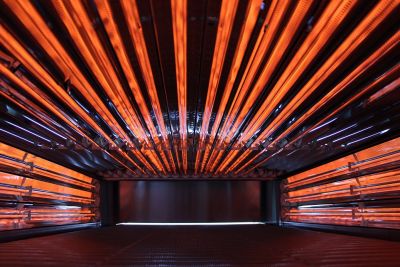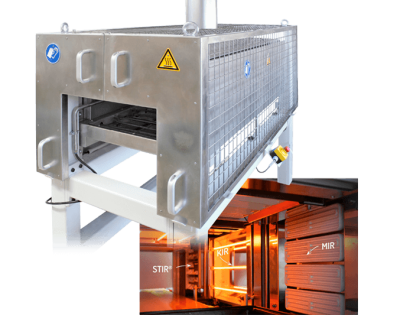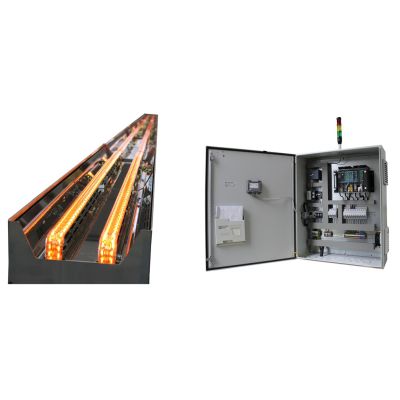Shrinkage: protection and insulation through plastics
When thermoplastics change their shape under the influence of heat and become smaller while retaining their volume, this is called shrinkage. Shrinking as a manufacturing process is used in many industrial areas, especially in the use of heat-shrinkable tubing. Heating causes the tubing to contract into a tight-fitting, solid casing. This protects e.g. cables, wires or electrical contacts from environmental influences as well as mechanically and serves as electrical insulation. The maximum shrinkage under the influence of temperature depends on the plastic used. In order to achieve a good seal, shrink sleeves can be coated with a hot glue on the inside. Heating is carried out in a hot air stream with hot air guns, open propane gas flames or IR heaters.
Aufschrumpfen mit Infrarotstrahlung – die optimale Wärmequelle für Schrumpfgeräte und Schrumpftunnel
Infrared heaters are excellent for shrinking plastics (e.g. shrink tubes) because they have a high power density and targeted controllability. This ensures a systematic heating process. Due to the direct and directed heat input, the infrared radiation has a targeted effect where it is needed. The infrared radiators are installed in shrink units or shrink tunnels in such a way that they enclose the products. After a very short time, a constant temperature is reached and leads to the shrinking of the plastics within a few seconds.
What should be considered when shrinking plastic?
In order to make the shrinkage process reliable, parameters such as processing time and temperature of the plastics must be taken into account. For large production volumes, automation leads to time savings and improved quality at the same time. The selection of the appropriate infrared system for plastic shrinking depends on the requirements of the application and the materials involved. By matching the emission of the infrared emitters to the absorption of the IR-active functional groups of the plastics used, the heating process can be optimally designed.
The advantages of infrared radiation for plastic shrinking at a glance
- High heat flux densities, heating within seconds
- Contactless and direct heat transfer
- Emission of the emitters matched to the absorption of the plastics
- No open flame
- Low energy loss
- High efficiency by enclosing the parts
- Targeted and reproducible heating
- Simple and safe operation due to temperature control
Ingolf Jaeger
Head of Sales
Dipl.-Ing. Mechanical Engineering
E-Mail: i.jaeger@ibt.de
Phone.: +49 (0) 3731 1683-15


